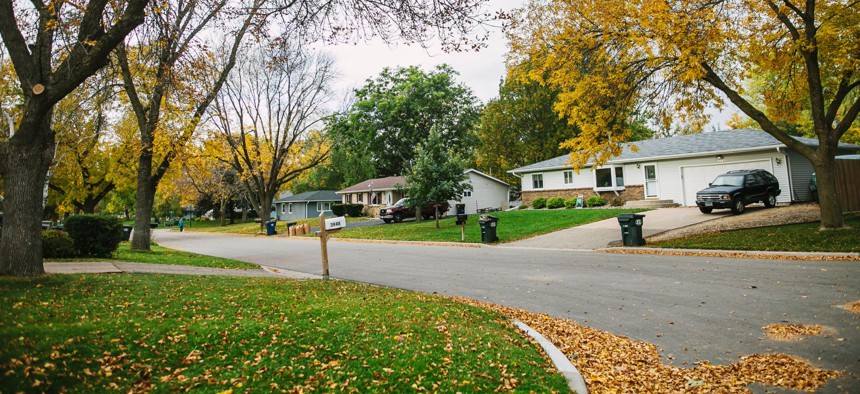How Do You Make a City Livable for All Age Groups?

A residential area in Minneapolis, Minnesota Shutterstock
At a National League of Cities event, Mayors Betsy Hodges of Minneapolis, Acquanetta Warren of Fontana, Calif., and C. Kim Bracey of York, Pa., discussed what’s working in their communities.
PITTSBURGH — Housing was a topic Minneapolis Mayor Betsy Hodges emphasized here Thursday as she discussed what it takes to create urban communities where people of all ages, including those getting on in years, can live and thrive.
“If people can stay in their homes longer,” she said, “it means we have more older folks in our neighborhoods, next to the young couple who just moved in who had a kid.”
A number of initiatives are underway in Minneapolis with this in mind, Hodges said.
She described efforts to enable seniors to get minor health care services at home, delaying the need for assisted living. Hodges also pointed to zoning policies designed so people can convert carriage houses or garages into “accessory dwelling units”—spaces that can be rented for extra income, or that a senior could move into while passing their home on to other family.
“My biggest goal is to make sure that we have more people in the city,” Hodges said. Minneapolis now has about 410,000 residents, according to U.S. Census Bureau estimates.
The mayor made her remarks during a panel discussion at the National League of Cities annual City Summit, which is taking place here this week. Joining her on the panel was Mayor Acquanetta Warren of Fontana, California and Mayor C. Kim Bracey of York, Pennsylvania.
During the conversation, the group of city leaders shared their ideas about how to make urban communities livable for people in a wide range of age groups.
Warren highlighted Healthy Fontana, a program that involves support from health care giant Kaiser Permanente. The mayor noted health statistics she saw after getting elected in 2010 that showed troubling rates of heart disease and diabetes among local residents.
Specific activities that are part of Healthy Fontana include exercise boot camps, free cooking classes, walking clubs and “wellness programs” for local businesses.
Warren said Healthy Fontana is meant to improve health outcomes for people of all ages.
“From cradle, all the way until when you think you’re putting that foot on the grave,” she said, “you’re going to be healthy.”
Warren said she is sometimes called the “Pied Piper” because walks she leads on weekends can attract dozens of kids who follow along. “We walk,” she said, “then I’m responsible for making sure they and their animals get back . . . kids are big on: ‘I’m bringing my dog.’”
Bracey said her eyes were opened to some of the difficulties that residents who are disabled might face getting around York after she injured her ankle in a motorcycle safety class. (A Harley-Davidson assembly and manufacturing facility in the city spurred the mayor’s interest in motorcycles.) “If I couldn’t get in and out of City Hall,” she said, “neither could others.”
An awareness of these kinds of issues, Bracey said, is now reflected in York’s “complete streets” policy.
Bracey also mentioned York’s City Hall For a Day program, which involves offering services and outreach normally available at City Hall in places such as parks, or elsewhere in the city.
The program, which Bracey said emerged from San Antonio, Texas, aims to provide wider access to services like permits and garbage bin distribution—especially for those who have limited transportation options. Many citizens, she said, are “not going to come to city hall.”
“You can’t do a lot,” Bracey added, “most anything in your community, without the engagement of residents.”
Bill Lucia is a Reporter for Government Executive’s Route Fifty and is based in Washington, D.C.

NEXT STORY: Oregon’s First Test of Automatic Voter Registration Has Mixed Results






